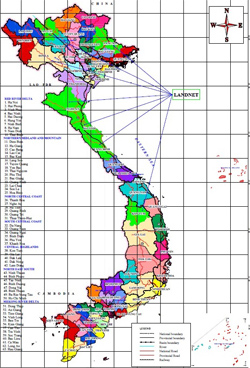ADVOCACY
Big cheers to our success lobby forestry law revision
- Dear All,
We are so pleased to inform you that we have been successful in lobbying for the recognition of the rights of EM over their customary forests. The Forestry Law Revision has been newly passed on 15 November 2017, and CIRUM/LandNet/LISO, with the active supports from EU, ICCO, CARE Vietnam, BftW, Mcknight Foundation, and CCFD, have successfully lobbied for the main following new rights:
- EM communities are legally recognized as forest owners [1] (this was absent in the previous Forestry Law).To this end, EM communities have the same rights as other forest owners (like state owned organizations, forestry companies/private companies);
- EM communities have legal rights to receive government fees for forest protection and payments for environment service (PES) [2], to practice forest belief [3], establish ecotourism business organizations [4], government helps to carry out forest based income generation activities and reforestation with local forestry species [5], to own planted trees that have been invested by communities themselves [6].
- Traditional forests of EMs (sacred forests, water source forests) are legally recognized as special use and protection forests and can be legally allocated to EMs for management and protection [7]. To this end, EMs have fully legal rights to access and control over their traditional forests [8].
- EM communities and households have legal rights to involve in forestry activities (forest management planning, forest land allocation, etc) to promote transparency and gender equality [9]
- Customary law in forest land allocation and forest management is legally recognized [10]
BIG CHEERS!
[1] Point 9 Article 2 and Point 6 Article 8[2] Point 1 (b) Article 81; Point 1 (b) Article 86[3] Point 6 Article 4[4] Point4 Article 53; Point 4 Article 56; Point 1 Article 60[5] Point 1 (c) Article 86[6] Point 1 (d) Article 86[7] Point 1 (d), Point 2 (d), Point 3 (a) Article 16[8] Point 9 Article 2[9] Point 4 Article 3, Point 1 (d) Article 10[10] Point 8 Article 14
Others
Ideological recommendation for improvement of draft Land Law 2013
Outputs of Seminar on Inadequacies and shortcomings in policies and practice of forest and forestland allocation and post- allocation
Policy Recommendations of CIRUM/Landnet are legalized in Decree 01/2017/ND-CP
The role and significance of village and community forest in ethnic minority communities in Vietnam
Sin Cheng, Lao Cai: deeper study for a complete forest map
When investments come to the village
The voice of the hydropower-driven resettled people should be heard
Community Forest Land Protection and Management: New Opportunities for Ethnic Minorities in Vietnam
LandNet year-end meeting
Sai Duan herbal bath service is now open for guests
Community members participate in developing a monitoring indicator framework
Beautiful images of Sai Duan Herbal Bath Service of the Red Dao disseminated
Amomum longiligulare and joy of the Red Dao in Sai Duan village
Guidance on natural forest review for planning of three types of forest in accordance with the Law on Forestry 2017
Evaluation and Comment of locals and partners on CIRUM activities






















